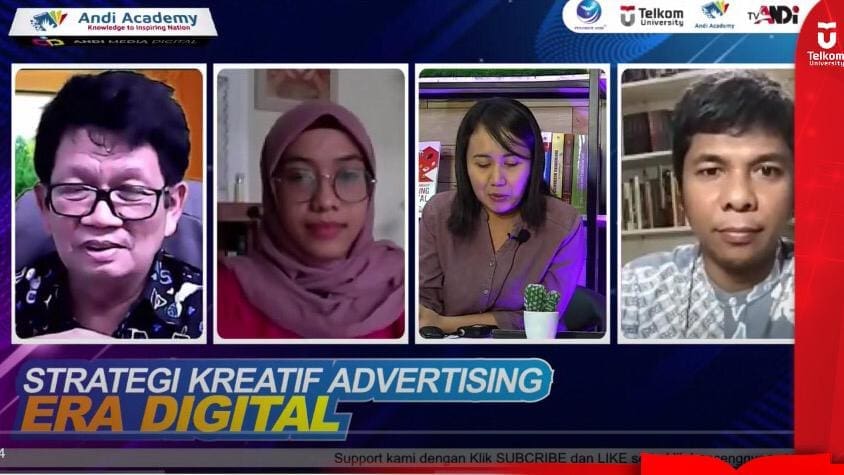 BANDUNG, Telkom University – Currently, advertisers do various ways to get people’s attention. Back then, it started from spreading pamphlets in open areas, placing billboards and various outdoor media to the use of digital media.
BANDUNG, Telkom University – Currently, advertisers do various ways to get people’s attention. Back then, it started from spreading pamphlets in open areas, placing billboards and various outdoor media to the use of digital media.
Based on this background, Andy Academy Publisher in collaboration with Telkom University organized a public lecture entitled “Creative Advertising Strategy for Digital Era”. This event invited Ilhamsyah, S.Sn., M.Ds., a lecturer in the S1 Visual Communication Design study program at the Creative Industry School of Telkom University and a book writer as a speaker.
Through the Book Introduction to Creative Strategies – Advertising in the Digital Age, Ilhamsyah explains that advertising has shifted into the art of persuading target audiences through persuasive messages and measurable strategies, aimed at changing the thoughts, behaviors, and actions of targets targeted towards products, namely goods, services or social solutions that are targeted at offered. In its operation, advertising utilizes mass media, namely print, electronic and digital media as a channel, which is designed in an integrated media strategy.
“Currently, advertising has changed its function to become an art in persuading people as potential product users. When the advertising agency business was fading, the need for art experts to persuade through visuals did not diminish. The science of advertising as art to persuade still exists, but the forms and industrial models have changed, “he said.
Ilhamsyah said that in the digital era, “integrated” is the keyword in every marketing step. Because digital technology and the internet all become biased and mingled, advertisements are public relations characters, direct selling is inserted into social campaigns, and so on. So that various explanations regarding comprehensive marketing communications will be termed advertising, and vice versa when the term advertising appears, we will think it is marketing communication. So that advertising and marketing communication are two things that cannot be separated.
“In general, the explanation of this book is based on the marketing concept 4.0 which shows that life is not always digital. When the digital world is so noisy that everything looks the same to viewers, offline activation becomes a new differentiator for a marketing move. In this case, digital media and offline media must also be integrated, “he said.
Ilhamsyah added that currently there are several types of advertising, namely, commercial advertising, corporate advertising, public service advertising, and social-commercial advertising. This simplification of advertising distribution is based on the increasing number of forms of advertising, due to the ease of modifying information and advertisements through digital media.
In another explanation, Ilhamsyah revealed that most of the unique advertising ideas emerged through extracting consumer insights. Consumer insight is the subconscious mind that directs a person’s daily behavior. This insight is closely related to hopes, dreams, fears, happiness, and so on. Through this insight, we can find big ideas which will later be translated into storylines.
“The purpose of making a storyline is to create a basic framework of ideas that do not go out of its main goal, namely selling products. The idea framework can show the main function of the product in solving the target audience’s problems. “
